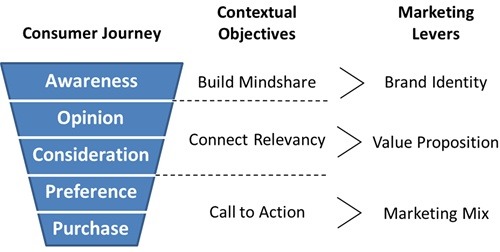A contextual marketing strategy using industry market drivers and social influencers to build brand loyalty – is a good way to achieve competitive advantage.

Delivering the right experiences to consumers,
- matches the right technology drivers with the right social influencers.
That is where the value proposition is formed, for example:
- Redbox transformed the DVD rental experience by recognizing a market for value-driven, impulse rentals, and by putting kiosks in key distribution points.
Targeted deployment focuses on communicating a brand’s value proposition and unlocking competitive advantages. A product’s value is not only the price tag but also what makes the consumer feel like purchasing.
Success depends on your ability to meet three key objectives:
- Building mindshare. This objective is important for new brands.
- Connecting relevancy. Reinforce the contextual relevance of your brand with its target customer.
- Calling to action. Focus on consumers who are comparing products and are ready to buy.
Read more: Build Contextual Marketing Strategy Into Your Brand